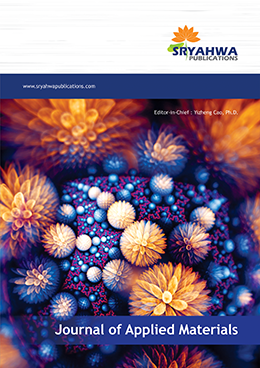
The Journal of Applied Materials is established as the international premier platform of novel, cutting edge reports of broad interest to the materials community.It encourages materials scientists and engineers, physicists, and chemists to communicate on a variety of topics in the field of materials including the structures, properties, characterization, processing, synthesis, and applications, as well as computational methods and fundamental materials theories with analytical and in silico approaches.We are primarily interested in those contributions in materials science research that demonstrate a significant scientific advance or understanding. We accept papers recording original research results on, or techniques for metals and alloys, ceramics, glasses, polymers, energy materials, electrical materials, magnetic materials, optical materials, composites, fibers, nano materials, and biological and biomedical materials.
The Journal publishes papers in English only. All papers deemed within the scope of the journal will be independently refereed. We welcome following types of manuscripts:
Short Communication: Report research of rapid value to the materials community and is limited to a maximum length of 2500 words with an abstract of no more than 60 words and a maximum of six figures.
Research article: Report new and original research at full length. Papers may be of a theoretical, experimental or practical nature provided that they make a contribution to the scientific record.
Review: A comprehensive examination of recent development and advances dealing with a specific topic. The authors must present their expert opinions regarding the most critical problems and grand challenges associated with this field.
Featured Letter: Authors' perspectives such as unsolved problems and tentative conclusions when properly identified, authors' outlook on new opportunities and challenges, etc.Featured Letters enjoy benefits such asrapid publication and will be featured on cover. If you believe you can contribute such a manuscript, you can contact the Editor-in-Chief, to suggest a topic for a Featured Letter.